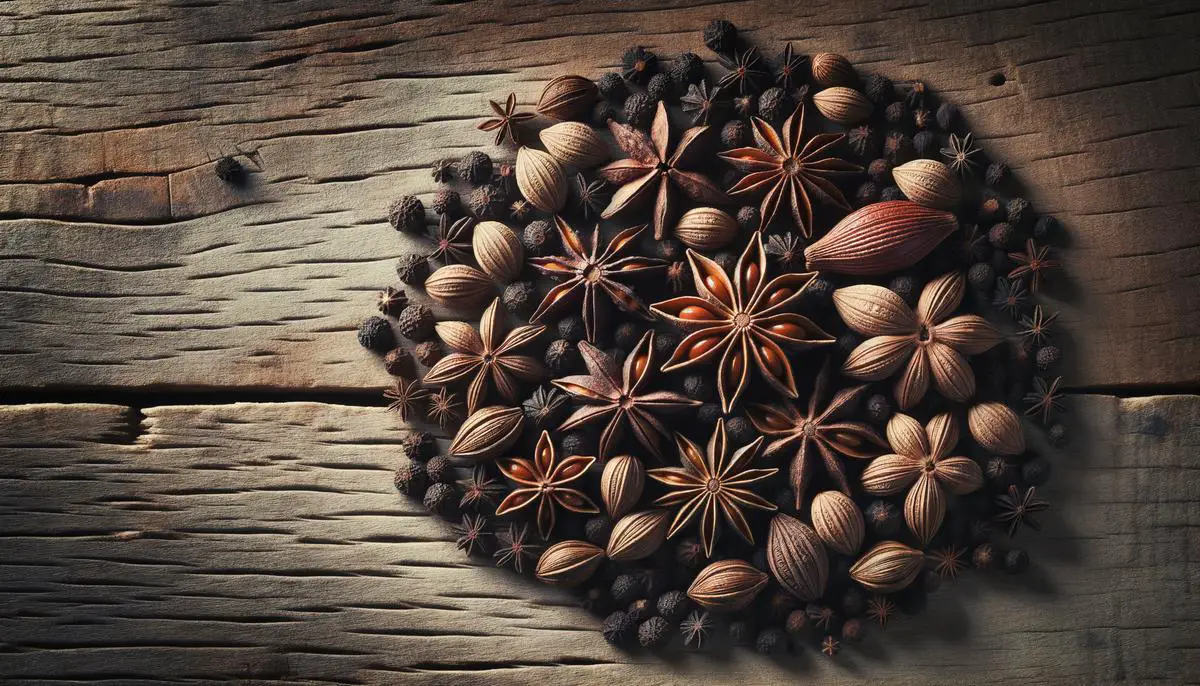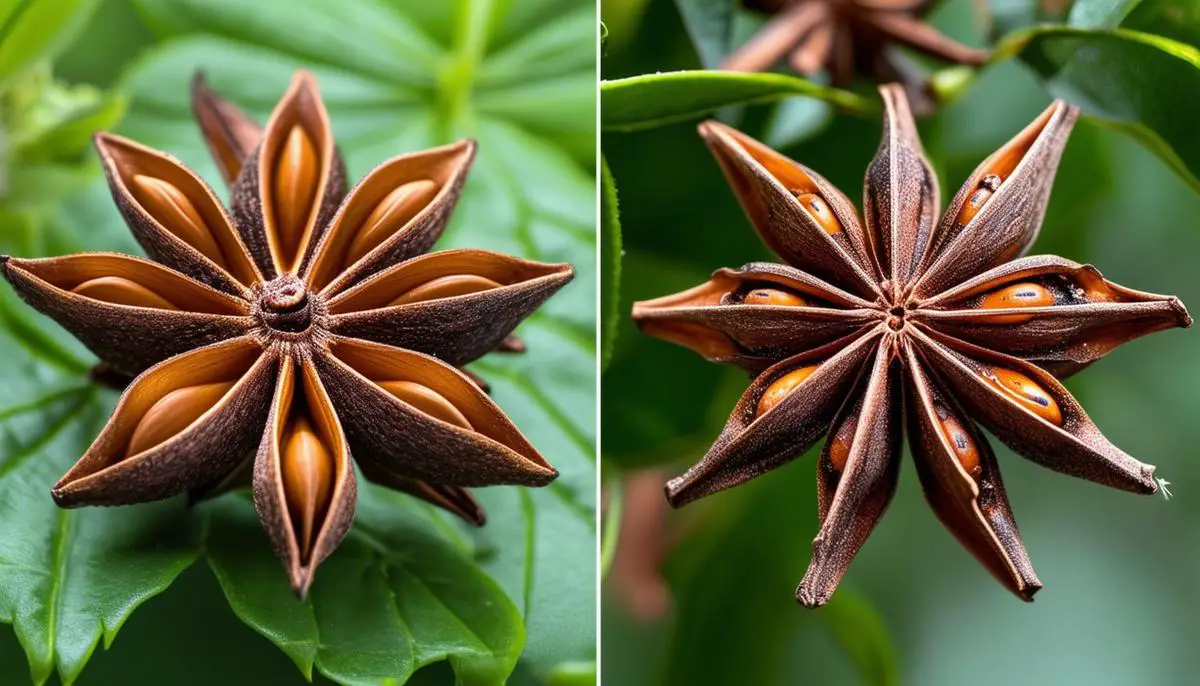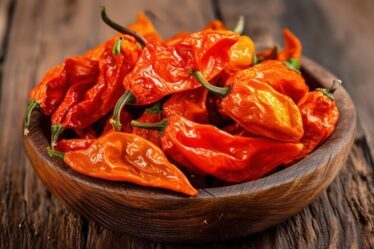
Botanical Origins and Cultural Significance
Anise and star anise, though often confused due to their similar names and flavor profiles, have distinct botanical backgrounds and hold unique places within various cultural traditions. Anise, or Pimpinella anisum, is a flowering plant from the Apiaceae family, known for its sweet, aromatic seeds that taste like licorice. Originating from the eastern Mediterranean and Southwest Asia, anise has been used in culinary and medicinal applications since ancient times1. It is celebrated in traditional European baked goods, liqueurs like ouzo and pastis, and is respected in folk medicine for its purported digestive benefits.
Star anise, on the other hand, comes from the fruit of the Illicium verum tree, native to Northeast Vietnam and Southwest China. The hard, eight-pointed pericarps encase seeds that deliver an intense flavor pivotal to many Asian recipes. It is a critical ingredient in Chinese five-spice powder and enhances the savor in dishes such as pho and various Indian curries. Star anise also plays a significant role in traditional Chinese medicine, believed to aid digestion and reduce inflammation2. These spices not only elevate cuisine but also foster well-being through age-old practices and remedies.

Chemical Composition and Flavor Profiles
Anise and star anise owe their aromatic richness to a variety of chemical compounds, chief among them being anethole. Found in approximately 90% concentration in both spices, anethole is responsible for the vibrant sweetness synonymous with licorice. Anise also features secondary flavor compounds such as estragole, which presents an herbal essence, and limonene, lending a hint of citrus. These molecules create anise's charismatic warmth in traditional European desserts and spirits.
Star anise contains estragole as well, which merges with alpha-trans-bergamotene—a compound imbuing hints of citrus and wood—and fenchone, offering a camphor-like background note. This symphony creates a complex flavor profile that punctuates the powerful nature of many Asian dishes. The interaction between these compounds dictates more than taste alone; when cooked, they react and meld differently depending on the ingredients and methods used. In simmering broths, star anise lends depth that binds with fats and liquids, while baking quickly volatilizes the brighter notes of anise, making it perfect for pastries and bread.
Culinary Uses and Substitution Considerations
Anise and star anise are celebrated in numerous dishes across European and Asian cuisines. Anise is essential in French pain d'épices, an anise-infused honey cake, and Italian biscotti di regina, where its sweet flavor balances with the nutty crunch of sesame seeds. Star anise, integral to Indian garam masala, blends with intense flavors like cloves and peppercorns to provide depth to curries and Tikka masalas. In Chinese cuisine, it infuses aromatic beef noodle soup with complex flavors.
These spices also find use in modern mixology, with bartenders infusing them into spirits for unique cocktails. However, substituting one for the other requires caution due to their botanical variance and difference in flavor intensity. Star anise, bolder than anise, can easily dominate a delicate dish, while anise may be too tame for vibrant Asian soups and curries.
Advanced culinary techniques like infusion and marination utilize these spices to impart flavor more effectively. Crushed star anise in a marinade provides an excellent prelude to grilling or roasting lamb, while milled anise seeds can give oven-mild rye bread a sophisticated edge. Whether used discreetly or as the star performer, anise and star anise continue to enrich culinary experiences globally.
Culinary Techniques Featuring Anise and Star Anise:
- Infusion
- Marination
- Grinding
- Toasting
- Garnishing

Anise and star anise are more than just flavor enhancers; they serve as conduits between past and present, bringing together cultures through shared culinary practices. Every sprinkle of these spices tells a story of connection, reminding us that our palates are not just personal but profoundly universal.
"Spices are the fastest, cheapest, and most effective way to alter the flavour profile of a dish, but spices are not all the same." – Samin Nosrat3
- Shojaii A, Abdollahi Fard M. Review of pharmacological properties and chemical constituents of Pimpinella anisum. ISRN Pharm. 2012;2012:510795.
- Wang GW, Hu WT, Huang BK, Qin LP. Illicium verum: a review on its botany, traditional use, chemistry and pharmacology. J Ethnopharmacol. 2011;136(1):10-20.
- Nosrat, Samin. Salt, Fat, Acid, Heat: Mastering the Elements of Good Cooking. Simon & Schuster, 2017.



